
by Glenn | Jun 28, 2018 | Novels
 BLACK SUN recently won the “Book Excellence Awards” from the Literary Excellence Writing Competition. I am extremely proud of this achievement because it is BLACK SUN’s third award!
BLACK SUN recently won the “Book Excellence Awards” from the Literary Excellence Writing Competition. I am extremely proud of this achievement because it is BLACK SUN’s third award! 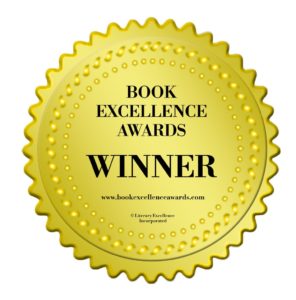
The first award was a Gold Medal in historical fiction from Military Writer’s Society of America.
The second was a 5 Star Review from Readers Favorite.
This novel holds tremendous personal importance for its telling of the stories I heard from and about my grandfather. If you wish to learn more, please visit my website and read My Journey with BLACK SUN. I truly believe you will find this article quite informative.
Thank you to all for your great comments, feedback, and readership of my novels. Knowing that I have touched so many people through my books is inspiring as well as gratifying. 
Regards,
Glenn
BLACK SUN cover design by
Battle Cry Revival

by Glenn | Dec 27, 2016 | Novels
 The Military Writers Society of America awarded Black Sun its 2016 GOLD Medal for excellence in Historical Fiction. This was a true honor considering the exacting standards of MWSA and the volume of great works Black Sun was in competition against. The accompanying MWSA review equaled the GOLD Medal:
The Military Writers Society of America awarded Black Sun its 2016 GOLD Medal for excellence in Historical Fiction. This was a true honor considering the exacting standards of MWSA and the volume of great works Black Sun was in competition against. The accompanying MWSA review equaled the GOLD Medal:
MWSA Book Review
Black Sun
Reviewed by Lee Boyland
Historical fiction at its best—The Mexican Revolution of 1910
To understand a nation you must read its history. The author takes the reader on a journey beginning in 1900, told through the eyes of a fictional young man. Mexico is slowly sinking into chaos under the dictatorial rule of President for life Diaz. Foreign interests are raping Mexico’s resources and people while paying off the president and his cronies. Desperate people are capable of desperate action and the faint scent of revolution is in the air.
The story begins with fourteen-year-old Mexican peon, Arnulfo Triana, laboring in the Ojuela Mine near the village of Mapimí in the State of Durango, Mexico. Conditions are poor and the pay is minimal. Only the native Indians have worse working conditions. Garcia, the foreman, is sadistic and has chosen Arnulfo as his current target. Chamaco, an older miner with a varied background attempts to protect him from Garcia. 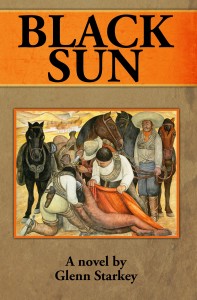
Arnulfo witnesses Garcia assaulting a Yaqui Indian woman and uses a shovel to end her rape, giving the reader their first indication of the man the young boy will become. In gratitude, the woman presents Arnulfo with a gift. Events become confused and Arnulfo flees. Chamaco follows on a “borrowed” mule and the two become lifelong friends. Along the way they meet Pancho Villa and join him. During the following years, Arnulfo grows into a man, takes the name Indio, and becomes Pancho’s trusted companion as Mexico continues its downward spiral. Villa is a natural leader and a powerful force for the people against its dictatorial president. Through Indio, the reader meets Emiliano Zapata, Abraham González, and many leaders of the coming revolution, including Francisco Madero, the man who would light the fuse.
The author’s descriptions of people, places and battles allows the reader to become part of unfolding events. Black Sun is a story of courage, despair, patriotism, deception, heroism, betrayal, loyalty, greed, honor, and leadership—both good and bad. It is the story of the Mexican Revolution of 1910 and beyond.
* * * *
 Along with receiving a wonderful “Readers Favorite 5 Star Review” written by Viga Boland, Black Sun has been quite honored with such recognition. But as noted in my blog article “My Journey with BLACK SUN,” this novel was far more than the simple writing of a historical fiction—it was the story of my grandfather’s life as he endured the onset and years of a brutal, bloody revolution that threw his country into violent turmoil. The research seemed never ending and the lead characters of the Mexican Revolution of 1910 were of such madness that I wondered at times if anyone would believe their true, odd idiosyncrasies.
Along with receiving a wonderful “Readers Favorite 5 Star Review” written by Viga Boland, Black Sun has been quite honored with such recognition. But as noted in my blog article “My Journey with BLACK SUN,” this novel was far more than the simple writing of a historical fiction—it was the story of my grandfather’s life as he endured the onset and years of a brutal, bloody revolution that threw his country into violent turmoil. The research seemed never ending and the lead characters of the Mexican Revolution of 1910 were of such madness that I wondered at times if anyone would believe their true, odd idiosyncrasies.
And adding to the awards was the excellent cover design by Jake Starkey who artistically blended the famous mural work of Diego Rivera (used through permission from the Estate of Diego Rivera) with captivating colors and visual presence to further enhance Black Sun.
Black Sun is available in print and eBook from all major booksellers.
Cover Design by Battle Cry Revival
I hope you will enjoy Black Sun, as well as my other novels, and I look forward to your review of the work—or write to me if you want to discuss the book! My thanks to MWSA for honoring my novel. 
Sincerely,
Glenn

by Glenn | Jul 12, 2016 | Novels, Writing

Review by Viga Boland for Readers’ Favorite
It’s not unusual for me to cry at the end of a movie. But it’s totally unlike me to cry at the end of a book. How did Glenn Starkey move me so much with his historical fiction novel, Black Sun? Was it the series of bloodcurdling events presented so clearly in this novel, based on the years leading up to and including the Mexican Revolution from 1910 – 1920?
Was it the characters Glenn Starkey brought to life in his protagonist Arnulfo (later known as Indio), his dearest friend and mentor, Chamaco, and the non-fictional, notorious Pancho Villa? Was it their love and loyalty to each other, along with their camaraderie and mescal-fuelled humor that touched me so deeply? Or was it perhaps their willingness to die for their country in the hopes of freeing its ravaged and poor inhabitants from a rotten dictatorship? Near the end of Black Sun, when Arnulfo’s heart broke as his faithful horse, Cha Cha, fell forward onto a rifle spear and died, my heart broke too as I reflected on the senseless and massive loss of lives Glenn Starkey depicted in Black Sun.
It was Glenn Starkey’s ability to capture humanity at its worst and at its very best that touched me so  deeply. It was his incredible skill as a writer that moved me to tears. Where some authors write a great story you can’t put down, Glenn Starkey weaves a richly coloured tapestry and breathes life into every thread of the story. Every sentence, every paragraph, every description, and every character matters. Black Sun is near impossible to put down, but when you finally do, you know you’ll never forget the story and its characters.
deeply. It was his incredible skill as a writer that moved me to tears. Where some authors write a great story you can’t put down, Glenn Starkey weaves a richly coloured tapestry and breathes life into every thread of the story. Every sentence, every paragraph, every description, and every character matters. Black Sun is near impossible to put down, but when you finally do, you know you’ll never forget the story and its characters.
Perhaps the explanation for that lies in the author’s own words. Glenn Starkey states in the afterword that for him, “writing this novel was a great exploration of thought.” It is that for the reader too. He states further that the writing reaffirmed his “belief in family bonds and the importance of not allowing foolishness and petty squabbles to drive wedges between family members.” You cannot come away from Black Sun without reflecting on how that theme was evident in all the relationships in this book: Arnulfo with his parents, with Myra, his first love, with Chamaco, Pancho, the Yaqui Indian leader, and even his horse, Cha Cha.
 Black Sun provokes the reader to think about our perceptions of others: so many of the “baddies” in this book are really the “goodies” and vice versa. Pancho Villa was a devil to some, a hero to others. It is obvious that Glenn Starkey has thoroughly researched the history of all the key figures, along with times, dates and events in the Mexican Revolution. In fact, he states on his website that Black Sun took years to write because the more he dug into the history, the more he found to research. And he brings all of it together in one block-buster of a book. Book reviews are supposed to be objective, but I don’t apologize for the subjectivity of this review. You see, historical fiction is one of my last choices when it comes to reading a book. That’s why I still can’t believe how much I loved Black Sun. This is one to put at the top of your “must-read” list. You won’t be disappointed.
Black Sun provokes the reader to think about our perceptions of others: so many of the “baddies” in this book are really the “goodies” and vice versa. Pancho Villa was a devil to some, a hero to others. It is obvious that Glenn Starkey has thoroughly researched the history of all the key figures, along with times, dates and events in the Mexican Revolution. In fact, he states on his website that Black Sun took years to write because the more he dug into the history, the more he found to research. And he brings all of it together in one block-buster of a book. Book reviews are supposed to be objective, but I don’t apologize for the subjectivity of this review. You see, historical fiction is one of my last choices when it comes to reading a book. That’s why I still can’t believe how much I loved Black Sun. This is one to put at the top of your “must-read” list. You won’t be disappointed.
And a personal note to me was added to the review by Ms. Viga Boland:
Glenn, I’m in total awe of your writing skill, your attention to detail, your ability to capture and keep a reader interested, and your strength in creating such believable characters. As I’ve said in my review, you brought me to tears; no book has ever touched me that way. And even more astonishing to me is you got me to read a genre I would never have touched otherwise. In a word, you are amazing. Thank you for reminding me how a great author writes.
Viga Boland
It is a review such as this that every author hopes for after enduring long hours of writing into so many late nights. To emotionally move a reader as I was moved while writing the novel, is truly a priceless reward.
I hope everyone will enjoy BLACK SUN. You may also enjoy my article on this site entitled “My Journey with Black Sun” …
Thank you,
Glenn
The link to the Readers Favorite review page is: https://readersfavorite.com/book-review/black-sun
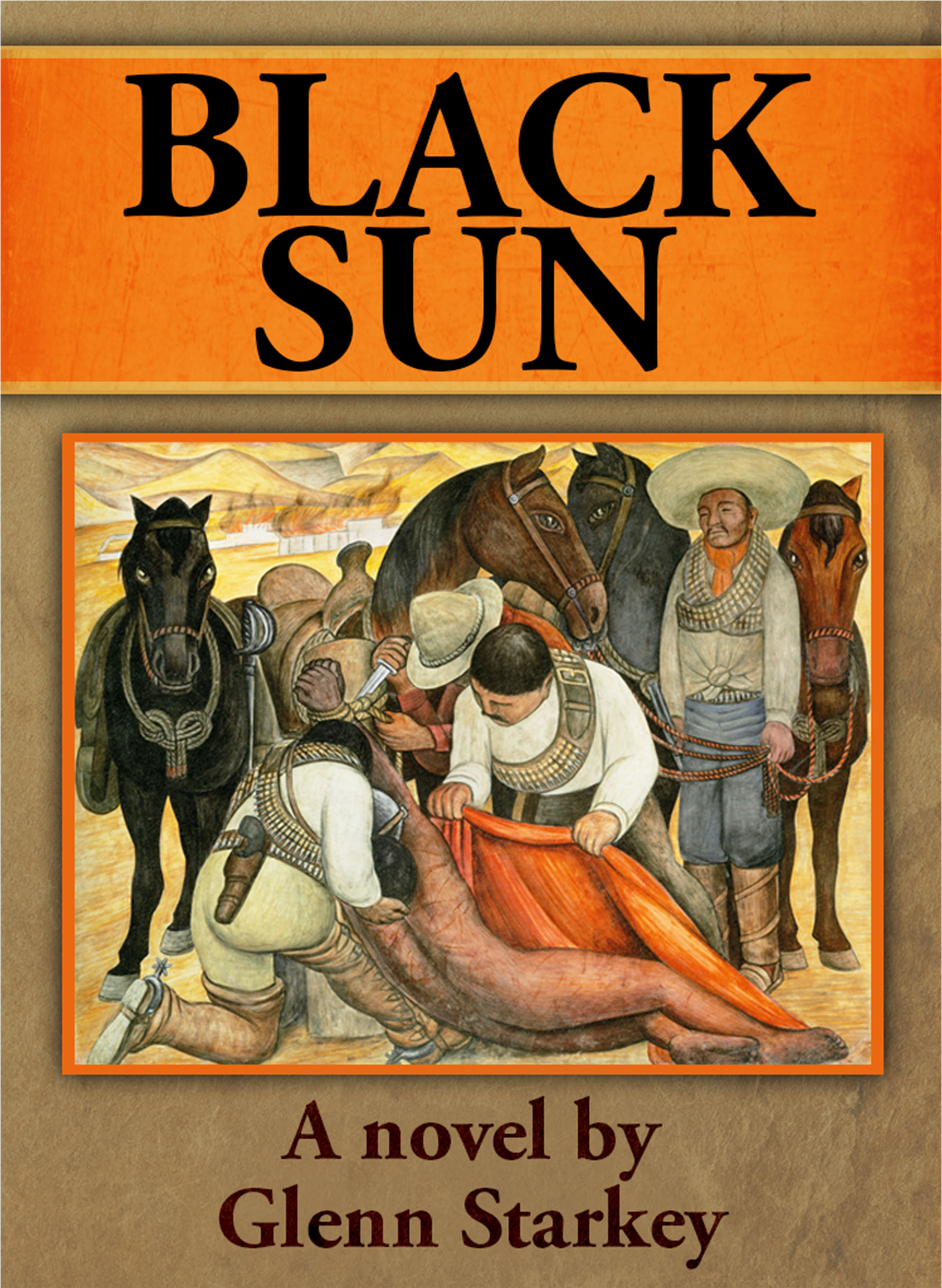
by Glenn | May 16, 2016 | Novels, Writing

Readers often ask authors where ideas come from for their novels. It’s a good question and one even I’ve asked of my author friends. For me, BLACK SUN was born from old stories about bandits, revolutionaries, and Indian war parties my maternal grandfather used to tell me; curiosity about his life while growing up in the violent devastation and corruption of old Mexico, and last, my interest in history.
Every novel I write begins as an entertaining story for readers, then at some point, I find myself delving deeper into the research because the book has taken life and I’m compelled to learn more. Such was the case with my novel Amazon Moon in which the maltreatment of the indigenous tribes in the Amazon jungle became one of the prime focuses within the book when initially it was to be the setting.
BLACK SUN truly took years to write. I’ve heard other authors say the same of their works and now I understand how that can be. Normally, a year and a half is my standard length of time to write a novel: a half year to kick it around in my head and do research, and a year to pound the keyboard into the wee hours of the night. Yes, there are those wizards of the written word that say they turn out a book in three months, and I’m happy for them if they can—but I’m not one.
So, armed with a few of my grandfather’s old stories swirling in my head, I began to ask my family questions about him. Little was known. He rarely spoke of his early years and everyone accepted his silence. He may have grown angry when no one believed him, or whatever may be the case, but he said almost nothing about his youth and parents. My other problem was that the related people who had tidbits of information were dead, dying, or didn’t want to reveal much. When you dig around in family histories you are treading on fragile ground. Hidden scars might be revealed or old wounds reopened.
I had come to believe that it was almost too late in life to gather anything credible then a saving grace arose when one of my aunts spoke of her genealogical work on the family tree. From her research I was able to glean trivia, birthdays, baptismal dates, birthplaces, residential locations, and official data from government records. Overlaying all of the family information on a historical timeline of Mexico, I matched family
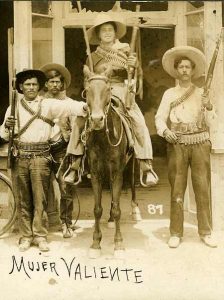
news.berkeley.edu
dates and history. My thousand-piece puzzle was gradually coming together. From there I dug into the individual history of small towns, people, battles, government officials, etc., and unfolded more tragedy than I wished to know. Then the story I needed to write revealed itself to me.
Every story has to have a variety of characters, one aspect of writing that can drive an author to the brink of insanity to create. I had no such problems. Research on the key players of the Mexican Revolution of 1910 soon reached a point where I wondered if anyone would find them believable. Take Pancho Villa for example. While some called him a hero, others claimed he was nothing more than a thief and murderer. A crack shot, one moment he might draw his pistol and without remorse, shoot a man. The next, Villa might be emotionally moved and openly weep. A renown womanizer, he cared little for money and never held a desire to be the President of Mexico, always informing others that such a position required an educated man which he was not. The stories, whether true or fabricated, go on and on and are the foundation of many debates over Pancho Villa.
Francisco Madero, who called for the revolution against President Diaz, was a short, frail man with a bird-like voice that grew squeaky and high-pitched when he was angered, and irritating to everyone’s ears. He talked to ‘spirits’ who counseled him on actions to take, and in the end, violently died as almost every major player in the revolution did.
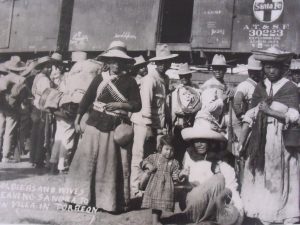
University of Chicago
Most people believe the Mexican Revolution was nothing more than Pancho Villa fighting against President Diaz yet there is far more to the story than that. I also found a number of contradictions in the lives of the people which made it difficult to write a true portrayal of the times. The Spanish were hated for their brutal conquest and control of the country, yet after they were run out of the country, the rich, fair-skinned Mexican upper-class treated their own poor countrymen equally bad, looking down on them because of their darker skin. No education was provided and working in the fields was all a peasant was believed capable of. Native Indians were considered the lowest of creatures, expendable slave labor only. At one time a bounty was paid for Indian ears. That was eventually stopped when too many dark ears of peasants were brought in and declared to come from Indians.
Unemployment, government corruption, distrust of government officials, racism, alcoholism, drug addiction, and other social problems were as problematic in old Mexico as currently exist today in America. Chinese immigrants came by the thousands to Mexico and the citizens of Mexico complained they were taking away their jobs, creating a high rate of unemployment. Government corruption was the norm and no one trusted government officials to protect anyone except themselves. The fair-skinned Mexicans looked down upon the darker skinned peasants without true reason. Pulque, a cheap drink, and peyote and marijuana, prevalent hallucinatory plants, gave rise  to alcoholism and drug addiction. With no jobs, the only thing left to do was get high or get drunk. Murder, rape and torture were commonplace. Roving bands of bandits were accepted as either thieves or protectors against the government soldiers. Few, if any of the people, were left untouched by the events leading up to the revolution yet the poor kept love alive in their families and persevered in life, holding on to what little happiness they could find.
to alcoholism and drug addiction. With no jobs, the only thing left to do was get high or get drunk. Murder, rape and torture were commonplace. Roving bands of bandits were accepted as either thieves or protectors against the government soldiers. Few, if any of the people, were left untouched by the events leading up to the revolution yet the poor kept love alive in their families and persevered in life, holding on to what little happiness they could find.
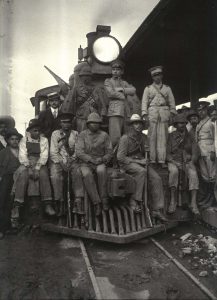
Huracheblog
BLACK SUN is a fictional account of my grandfather in his youth, but the everyday life of the people and the historical events, bandits, politicians, and birth of the revolution are all taken from interviews and countless research papers, diaries, personal journals, and books as I could find. Almost every character was researched so I could have authenticity about their actions, mannerisms, and demise in life.
Of course there will be debates from readers about who was truly good or bad in real life, but such discussions will always exist. At least I know that after reading BLACK SUN, people will have a realistic understanding of the Mexican Revolution of 1910, how it came about, and who were the participants in the civil war.
It’s a shame such a beautiful country as Mexico, rich in resources, culture, and great people, has had such a tragic history up to this very day. Until the government corruption, drug cartels, and high crime rate are brought under control, Mexico will always remain on the verge of another civil war.
I hope you will enjoy BLACK SUN. I look forward to your comments and thoughts on the book.
Glenn
BLACK SUN book cover design by Battle Cry Revival

 BLACK SUN recently won the “Book Excellence Awards” from the Literary Excellence Writing Competition. I am extremely proud of this achievement because it is BLACK SUN’s third award!
BLACK SUN recently won the “Book Excellence Awards” from the Literary Excellence Writing Competition. I am extremely proud of this achievement because it is BLACK SUN’s third award! 




 Along with receiving a wonderful “
Along with receiving a wonderful “





